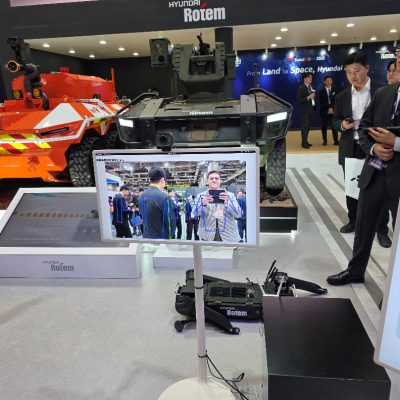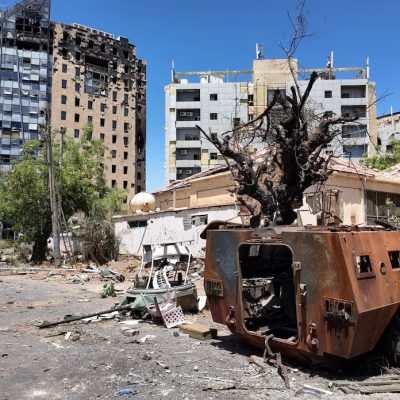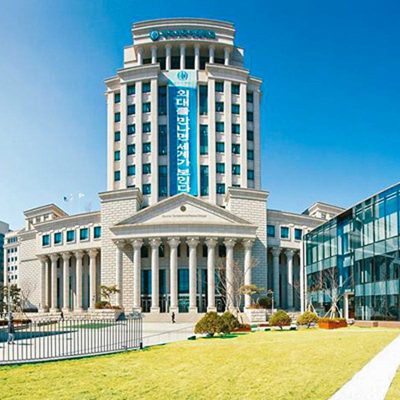Threat Assessment & Recommendations
By: Mohamed N. El Guindy, UNODC – ROMENA
15 August 2017
Dr. Mohamed El-Guindy is a Cybersecurity and Cybercrime Expert, UNODC, He’s Deputy Director, Centre for Law and Emerging Technologies, Faculty of Law, the British University in Egypt. He’s also Director of Operations at IGSDA.
Introduction
Human trafficking and human smuggling are often confused in Law Enforcement reporting; however, the two are very different crimes. Human trafficking refers to exploiting men, women or children for the purpose of forced labor or commercial sexual exploitation. Human smuggling also known as migrant smuggling refers to the provision of service which include transportation or fraudulent documents to an individual who is voluntary seeking illegal entry into a foreign country.
Human trafficking is also called the modern-day slavery which defined in the international law in similar manner. The 2000 United Nations Protocol to Prevent, Suppress and Punish Trafficking in Persons, Especially Women and Children (UN Protocol) also focuses on force, fraud, or coercion for the purpose of exploitation:
“Exploitation shall include, at a minimum, the exploitation of the prostitution of others or other forms of sexual exploitation, forced labor or services, slavery or practices similar to slavery, servitude, or the removal of organs.”[1]
It’s worth mentioning that movement is not required for an
act of trafficking, although it can occur. A victim of human trafficking does
not need to be transported from place to place or from one location to another
in order for the crime of trafficking to be occurred. Human trafficking can
take place within a country as well as across international borders. The
defining element of trafficking is exploitation for the purposes of forced
labor or commercial sex, not transportation.
[1] UNGA Res. 55/25 (15 November 2000), Annex II, “Protocol to Prevent, Suppress and Punish Trafficking in Persons, Especially Women and Children, supplementing the United Nations Convention against Transnational Organized Crime,” Art. 3(a)
[1] UNGA Res. 55/25 (15 November 2000), Annex II, “Protocol to Prevent, Suppress and Punish Trafficking in Persons, Especially Women and Children, supplementing the United Nations Convention against Transnational Organized Crime,” Art. 3(a)
Obviously, Human smuggling which is also known as migrant smuggling involves the provision of a service, such as transportation or fraudulent documents to an individual who voluntary seeks to gain illegal entry into a foreign country. Therefore, Human smuggling is a crime against a state while human trafficking is a crime against a person.

Image source: International Organization for Migration (IOM)
Scope of the Problem
After the failure of the so-called “Arab Spring”
and spread of chaos and terrorism across Middle East and North African
countries, human trafficking and migrant smuggling has increased significantly.
According to statistics from different sources[1],
the number of human trafficking convictions is on the rise[2].
[1] Eurostats, Trafficking in human being, 2015 edition
[2] https://www.statista.com/chart/10037/human-trafficking-convictions-on-the-rise/

One obvious example of the crisis begins in the year of Libya’s revolution which toppled Gadhafi. The UN Refugee Agency (UNHCR) declared the Mediterranean as the deadliest water crossing for migrants and asylum seekers in the world, after an exodus of people fleeing the fighting, left an estimated 1,500 dead or missing[1]. Six years after the outbreak of that war, the situation is dramatically worse. In 2016 more than 5,000 people perished, the vast majority in the Central Mediterranean, the stretch of sea that divides Europe from North Africa[2]. The sources also indicate that the number of arrivals to Europe through the Mediterranean reached 118,000 in 2017 and also over 2400 dead and missing persons in same year alone.
[1] http://data2.unhcr.org/en/situations/mediterranean
[2] UNHCR, “Mediterranean takes record as most deadly stretch of water for refugees and migrants in 2011,” May 31, 2012 [Press Release], January 31, 2012

European countries are the largest receiver of migrant and human trafficking from North African countries, especially from Libyan coasts and West Africa[1]. Unfortunately, North African countries are not capable of fighting these types of crimes efficiently due to legal and technical issues. According to US department of State[2], most countries in MENA lack the legal procedures to meet the minimum requirements of Trafficking Victims Protection Act (TVPA)[3]. The report indicated that three Tiers are used to assess countries around the world against the TVPA requirements as follows:
[1] The role of organized crime in the smuggling of migrants from West Africa to the European Union, UNODC report 2011
[2] 2017 Trafficking in person Report, US Department of State
[3] https://humantraffickinghotline.org/what-human-trafficking/federal-law
Tier 1: Countries whose governments fully meet the Trafficking Victims Protection Act’s (TVPA) minimum standards.
Tier 2: Countries whose governments do not fully meet the TVPA’s minimum standards, but are making significant efforts to bring themselves into compliance with those standards.
Tier 2 Watch List: Countries whose governments do not fully meet the TVPA’s minimum standards, but are making significant efforts to bring themselves into compliance with those standards AND:
a) The absolute number of victims of severe forms of trafficking is very significant or is significantly increasing;
b) There is a failure to provide evidence of increasing efforts to combat severe forms of trafficking in persons from the previous year; or
c) The determination that a country is making significant efforts to bring itself into compliance with minimum standards was based on commitments by the country to take additional future steps over the next year.
Tier 3: Countries whose governments do not fully meet the minimum standards and are not making significant efforts to do so.

Due to the situation in MENA countries, there is an urgent need for capacity building in terms of legal and technical capabilities.
Recommendations
Countries in the region need to enhance their legal systems in prosecution, protection and prevention of human trafficking and migrant smuggling. On the other side, Law Enforcement Authorities need to upgrade their capacity in order to discover, prevent and fight human trafficking using special investigation techniques. These types of crimes require LEAs to be transformed into knowledge-based professionals using the new trends in intelligence-led policing. The rise of technology has not only strengthened the arms of the LEAs but also the enemies of the states. Modern warfare against the crime and terrorism is being fought on a technologically elevated platform altogether. Serious and organized crimes such as human trafficking and migrant smugglings need planning and coordination before execution; in order to prevent them, Law Enforcement Agencies need to actively monitor communication, transactions and events across domains, draw intelligence from them and act in time. Monitoring and surveillance would be the first step but digging out the relevant information out of this vast pool of diverse data would be the real challenge.
Every second, oceans of data are being created in forms of structured and unstructured data. From Facebook to Twitter, WhatsApp, Skype, emails, chat and web pages. Today’s Analysts have access to terabytes, even petabytes of real-time data, but they don’t know what to do with it. It would take weeks, even months from security analysts to go through this vast amount of data from cell phones, towers, social networks, banking systems, travel databases, interception systems, government databases and all other data sources. And that’s just a fragment of the problem. To create actionable intelligence, it is critical for today’s security analyst to be able to profile and find patterns and linkage information, identify targets and analyze from the vast array of historical and real-time data available. In fact, it is like finding the needle in a haystack. The culture of LEAs is changing from react to predict and this is where intelligence-led policing is highly needed.
1. The role of intelligence in fighting human trafficking
Intelligence collection, analysis and investigations must reflect the geographical, structural and commercial components that make up the crime of human trafficking. Geographically and structurally, these can be expressed as:
- Country of origin—recruitment and export
- Country of transit—transportation
- Country of destination—reception and exploitation
The data and information required to fight in human trafficking can be gathered using strategic intelligence and tactical intelligence. Criminal intelligence is becoming the main contributor of fight against human trafficking and migrant smuggling.
2. The role of Technology
Some trafficking cases start with the offender contacting the potential victims on social networking sites such as Facebook. The techniques used by criminals to gain trust vary widely, including expressing love and admiration of the victim, promising to make the victim a star, and providing a ticket to a new location away from the victim’s home. Another type of trafficking tactic starts with an online employment advertisement and results in an unsuspecting victim relocating from home on the promise of an unbelievably good job.
After the victim has joined the criminal, various techniques then used to restrict the victim’s access to communication with his home, such as imposing physical punishment unless the victim complies with the trafficker’s demands and making threats of harm and even death to the victim and his family. There are many cases which highlight how traffickers used technology to target their victims. One example is suspicious advertisements for nannies, waitresses, and dancers on Web sites in Latvia and Lithuania that were monitored by LEAs in Denmark. The traffickers used Internet sites to post advertisements for jobs in Western Europe. An anti-trafficking group in Poland reports that 30 percent of its clients (trafficked women) were recruited through the Internet[1].
Technology is increasingly used by criminals in serious and organized crimes; therefore, LEAs needs to use technology to fight these crimes. The rapidly changing landscape of organized crimes requires new skills for LEAs. Most law enforcement administrators and top management staff think traditional policing techniques are still viable in the 21st century; others think that technology has the answer to most law enforcement problems. Indeed, both do not realize that we are witnessing an interdisciplinary world; technology alone is not a silver bullet for the world’s problems. LEAs need special capacity building programs at different disciplines and levels in order to combat the new types of emerging threats.
Evidences related to the sophistication of recent human trafficking crimes and the ability of law enforcement to deal with them, suggest that most agencies in the region lack scientific, technical and analytical capability at different levels; even if they have advanced technologies.
In this
regard, RAND Corporation’s study titled “Moving Toward the Future of Policing”[2]
mentioned the following important observation on future policing: “The massive increase in data collection and
storage capability has resulted in an enormous increase in the amount of
available information to which police organizations have access when trying to
combat crime. Yet, without appropriate tools for organizing, managing, and
sifting through these massive amounts of data, the data may drown police, not
help them. All that data may do nothing more than require multiple times more
man-hours for personnel to cull through the haystacks of data, looking for the
needle. More data could simply mean more work, not smarter or more effective
policing… . . . advances that change the ways in which police departments
gather, process, share, and protect data and information are going to have
increasingly profound impacts on police organizations. Organizations will
become more networked and systems-oriented in a shift toward data-driven
policing.”
Technology is a double-edged sword as mentioned
by President Barack Obama in his speech addressing Clinton Global Initiative “We
are turning the tables on the traffickers. Just as they are now using
technology and the Internet to exploit their victims, we are going to harness
technology to stop them.”[3]
[1] Vienna Forum to Fight Human Trafficking, Technology and Human Trafficking 8 (Background Paper, 2008), http://www.unodc.org/documents/human-trafficking/2008/BP017Technology andHumanTrafficking.pdf
[2] Moving Toward the Future of Policing, RAND Corporation 2007
online version: www.rand.org/content/dam/rand/pubs/monographs/2011/RAND_MG1102.pdf
[3] President Barack Obama Address to the Clinton Global Initiative September 25, 2012
Technology can be used to raise awareness of the human trafficking crime and also fighting it. Special capacity building programs are needed to improve the capability of LAEs and Prosecutors to fight and prosecute those crimes.





